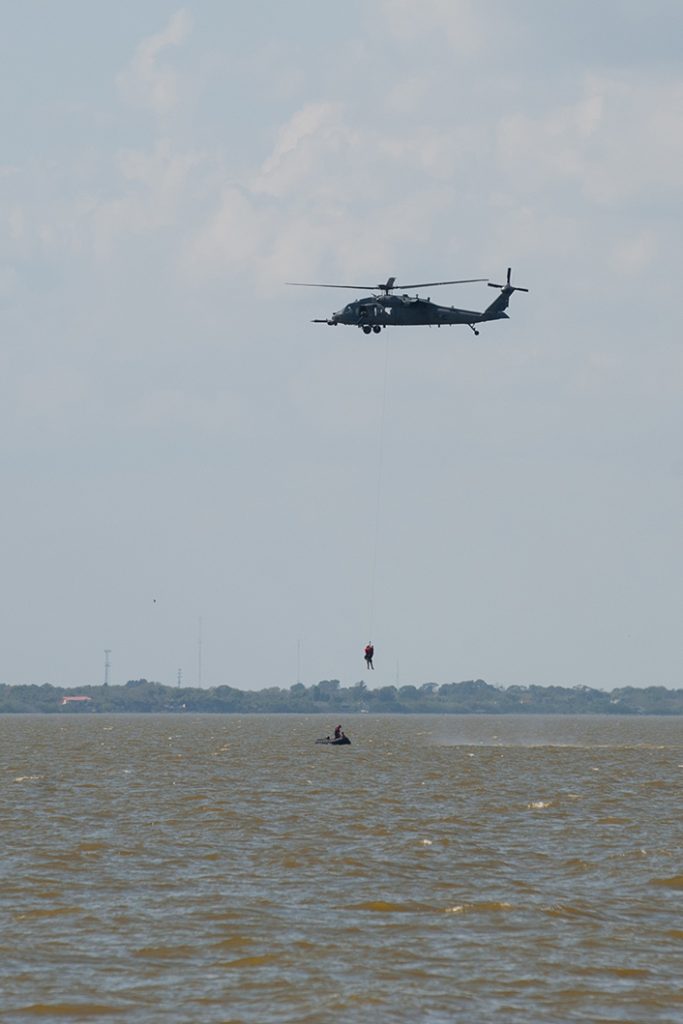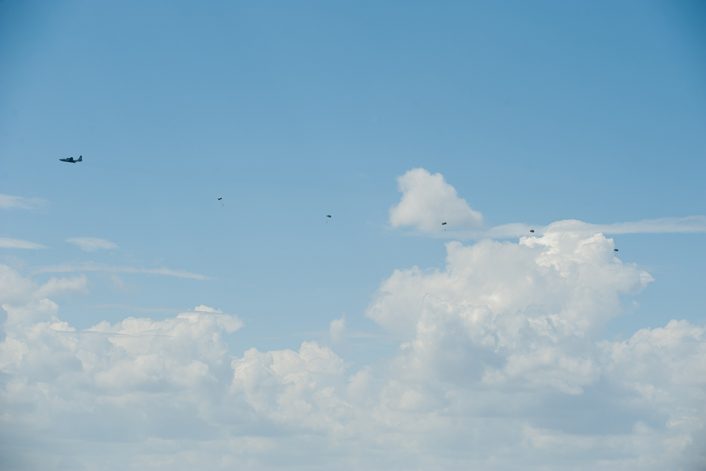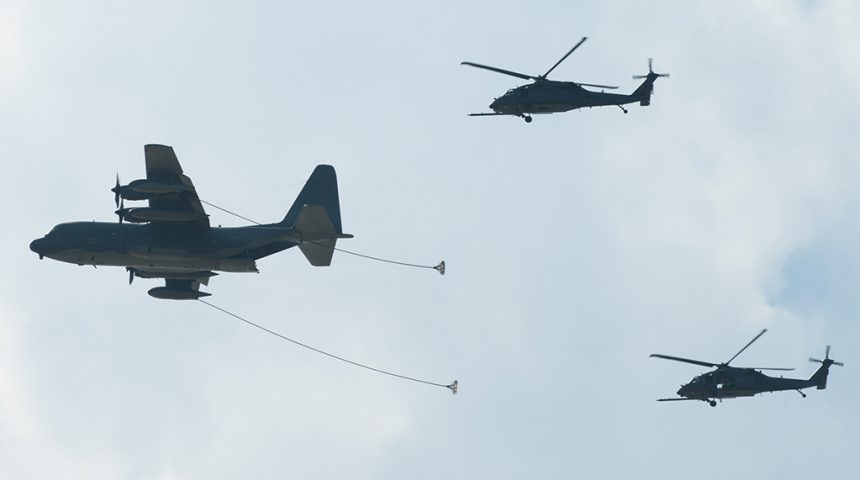Astronaut recovery training in preparation for America’s return to human spaceflight.
On Mar. 14, 2016 the U.S. Air Force Detachment 3 belonging to the 45th Space Wing and the 920th Rescue Wing held an astronaut recovery demonstration in the Banana River along the west side of Patrick Air Force Base, Florida.
The simulation was aimed to reproduce a launch pad abort in which a spacecraft had to make an emergency escape from a failing rocket and splash down in the ocean. For the demonstration, a life raft about the size of a spacecraft was used by engineers and active duty Air Force personnel acting as astronauts who needed to be pulled from the water and treated.
If an off-nominal landing scenario like this should occur the pararescuemen from Detachment 3 would jump from an airlifter such as a C-130 or a C-17 and once in the water they would reach the spacecraft with a rigid inflatable boat. Next they would climb aboard the spacecraft and stabilize it so astronauts could be safely rescued.
Then, finally, search and rescue helicopters would recover astronauts and pararescuemen.

Noteworthy this scenario could become reality in less than two years, when NASA will return to launch its aircrews from Cape Canaveral to the International Space Station.
In fact, as we have already explained, after the Space Shuttles retirement, U.S. lost the capability to launch its astronauts into space and had to rely on Russia’s Soyuz to bring them to the International Space Station.
Boeing, SpaceX and Sierra Nevada are developing the CST-100 Starliner, Crew Dragon and Dream Chaser spacecrafts respectively. Eventually one of these vehicles will be selected by NASA not only to restore its autonomous capability but also to pave the way for the development of a new generation of spacecrafts able to bring astronauts on Mars.
Images in this post show one HC-130P/N King and one HH-60 Pave Hawk practicing in the rescue procedures.










